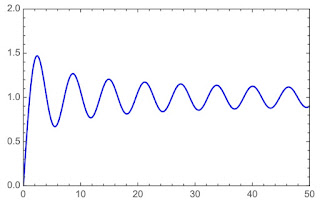I’m a regular reader of TIME magazine. Every year they publish an issue devoted to the TIME100: the hundred most influential people of that year. I thought I would do the same, except I’d focus on Intermediate Physics for Medicine and Biology. So, below is a list of the one hundred scientists, physicians, engineers, and mathematicians who most influenced IPMB. I list them by impact, with the most influential first.
Like for the TIME100, selecting the list is not an exact science. It’s based on mentions in IPMB, numbers of citations, and my own personal opinions. I’m sure your list would be different, and that’s okay.
There are many brilliant scientists who didn’t make the list (for example: Newton, Faraday, Maxwell, Rutherford, and Einstein). I tried to focus on people who had a direct impact on IPMB, rather than fundamental but not biomedical contributions to physics, so these and other luminaries were left off.
The oldest scientists are Brown (born 1773) and Poiseuille (1797). The youngest are Basser, Goodsell, Hämäläinen, LeBihon, MacKinnon, Mattiello, Strogatz, and Xia (all more or less my age). I’m embarrassed to say there are only three women (Curie, Eleanor Adair, and Mielczarek; four if you count Abramowitz’s coauthor Stegun). Thirty three are alive today. Twenty are Nobel Prize winners (marked with an asterisk). I know ten personally (marked with a §). When I wasn’t sure about the year a scientist was born or died, I guessed and marked it with a question mark. There are many more I would like to honor, but I decided to—like TIME—stop at 100.
Enjoy!
- Alan Hodgkin* (1914–1998) English physiologist who discovered how nerve action potentials work and developed the Hodgkin-Huxley model.
- Andrew Huxley* (1917–2012) English physiologist and computational biologist who discovered how nerve action potentials work and developed the Hodgkin-Huxley model.
- Godfrey Hounsfield* (1919–2004) British electrical engineer who invented the first clinical computed tomography scanner.
- Paul Lauterbur* (1929–2007) American chemist who developed a method to do magnetic resonance imaging using magnetic field gradients.
- Edward Purcell* (1912–1997) American physicist who co-discovered nuclear magnetic resonance, was author of the article “Life at Low Reynolds Number,” and wrote volume 2 of the Berkeley Physics Course titled Electricity and Magnetism.
- Allan Cormack* (1924–1998) South African physicist who developed much of the mathematical theory behind computed tomography.
- Hermann von Helmholtz (1821–1894) German physicist and physician; First to measure the propagation velocity of a nerve action potential.
- Adolf Fick (1829–1901) German physician and physiologist who derived the laws of diffusion (Fick’s laws).
- Willem Einthoven* (1860–1927) Dutch medical doctor and physiologist who was the first to accurately measure the electrocardiogram.
- Marie Curie** (1867-1934) Polish-French physicist and chemist who discovered the elements radium and polonium; The unit of the curie is named after her.
- Jean Léonard Marie Poiseuille (1797–1869) French physicist and physiologist who determined the law governing the flow of blood in small vessels.
- Max Kleiber (1893–1976) Swiss biologist who established a ¾ power law relating metabolic rate to mass.
- Felix Bloch* (1905–1983) Swiss-American physicist who co-discovered nuclear magnetic resonance and derived the Bloch equations.
- Peter Mansfield* (1933–2017) English physicist who developed techniques used in magnetic resonance imaging, including echo planar imaging.
- Roderick MacKinnon* (1956) American biophysicist who determined the structure of the potassium ion channel.
- Erwin Neher* (1944) German biophysicist who co-invented the patch clamp method to record from single ion channels.
- Bert Sakmann* (1942) German physiologist who co-invented the patch clamp method to record from single ion channels.
- Tony Barker (1950) English engineer who invented transcranial magnetic stimulation.
- Robert Plonsey§ (1924–2015) American engineer who contributed to theoretical bioelectricity and wrote Bioelectric Phenomena and other books.
- Peter Basser§ (1959?) American engineer who invented the magnetic resonance imaging technique of diffusion tensor imaging.
- William Oldendorf (1925-1992) American medical doctor who first designed a computed tomography device.
- J. B. S. Haldane (1892–1964) British evolutionary biologist who published “On Being the Right Size,” an essay about scaling.
- Geoffrey West (1940) British theoretical physicist who derived a model to explain the ¾ power law of metabolism.
- George Ralph Mines (1886–1914) English cardiac electrophysiologist who demonstrated reentry in cardiac tissue.
- Bernard Cohen (1924–2012) American physicist who opposed the linear no-threshold model of radiation risk.
- John Wikswo§ (1949) American physicist who measured the magnetic field of a nerve.
- Arthur Winfree§ (1942–2002) American mathematical biologist who studied cardiac arrhythmias and wrote When Time Breaks Down: The Three Dimensional Dynamics of Electrochemical Waves and Cardiac Arrhythmias.
- Richard Blakemore (1950?) Researcher who discovered magnetotactic bacteria.
- John Moulder (1945–2022) Radiation biologist who debunked suggestions that radiofrequency electromagnetic fields are dangerous.
- Kenneth Foster§ (1945) American bioengineer and expert on the biological effects of electromagnetic fields.
- Paul Callaghan (1947–2012) New Zealand physicist who wrote Principles of Nuclear Magnetic Resonance Microscopy.
- Paul Nunez (1950?) Analyzed electroencephalography using mathematics, and author of Electric Fields of the Brain.
- Charles Bean (1923–1996) American physicist who studied porous membranes and reverse osmosis.
- John Hubbell (1925–2007) American radiation physicist who measured and tabulated x-ray cross sections.
- Arthur Compton* (1892–1962) American physicist who analyzed Compton scattering of x-rays.
- William Bragg* (1862–1942) English physicist who discovered the Bragg peak of energy deposition from charged particles in tissue.
- Mark Hallett§ (1943) National Institutes of Health neurophysiologist who helped develop transcranial magnetic stimulation and wrote, with Leo Cohen, the article “Magnetism: A New Method for Stimulation of Nerve and Brain.”
- Selig Hecht (1892–1947) American physiologist who performed a classic experiment on scotopic vision.
- Milton Abramowitz (1915–1958) American mathematician who, with Irene Stegun, coauthored the Handbook of Mathematical Functions with Formulas, Graphs, and Mathematical Tables.
- Knut Schmidt-Nielsen (1915–2007) Norwegian-American comparative physiologist and author of How Animals Work and Scaling: Why Is Animal Size So Important?
- Steven Vogel (1940–2015) American biomechanics researcher and author of Life in Moving Fluids: The Physical Biology of Flow and other books.
- Mark Denny (1951) American physiologist and author of Air and Water: The Biology and Physics of Life’s Media.
- Howard Berg (1934–2021) American biophysicist who studied the motility of E. coli and wrote Random Walks in Biology.
- Frank Herbert Attix (1925) Radiologist who is the author of Introduction to Radiological Physics and Radiation Dosimetry.
- Steven Strogatz (1959) American mathematician and author of Nonlinear Dynamics and Chaos and other books.
- Frederick Donnan (1870–1956) British chemist who analyzed Donnan equilibrium.
- Gustav Bucky (1880–1963) German-American radiologist who invented the Bucky grid used in x-ray imaging.
- Gopalasamudram Narayanan Ramachandran (1922–2001) Indian physicist who, with A. V. Lakshminarayanan, developed mathematical methods used in computed tomography.
- Peter Agre* (1949) American molecular biologist who discovered membrane water channels called aquaporins.
- Eleanor Adair (1926–2013) American physiologist who studied the health risks of microwave radiation.
- Robert Adair (1924–2020) American physicist who studied the biological effects of weak, extremely-low-frequency electromagnetic fields.
- Yuan-Cheng Fung (1919–2019) Chinese-American biomedical engineer, and author of Biomechanics.
- Herman Carr (1924–2008) American physicist and pioneer in magnetic resonance imaging.
- Matti Hämäläinen (1958) Finnish physicist who was lead author on the article “Magnetoencephalography—theory, instrumentation, and applications to noninvasive studies of the working human brain”.
- Saul Meiboom (1916–1998) Israeli researcher who, with David Gill, co-invented of the Carr-Purcell-Meiboom-Gill pulse sequence used in magnetic resonance imaging.
- Oskar Klein (1894–1977) Swedish physicist who, with Japanese physicist Yoshio Nishina, developed the Klein-Nishina formula for Compton scattering of x-rays.
- Chad Calland (1934–1972) Medical doctor, kidney transplant patient, and author of the paper “Iatrogenic Problems in End-Stage Renal Failure.”
- Walter Blount (1900–1992) American orthopedic surgeon who advocated for the use of a cane.
- Albert Bartlett (1923–2013) American physicist and author of The Essential Exponential! For the Future of Our Planet.
- Pierre Auger (1899–1993) French physicist who studied the emission of Auger electrons.
- Rolf Sievert (1896–1966) Swedish medical physicist who studied the biological effects of ionizing radiation; The unit of the sievert is named after him.
- Louis Gray (1905–1965) English physicist who worked on the effects of radiation on biological systems. The unit of the gray is named after him.
- Richard Frankel (1943?) American researcher who studied magnetotactic bacteria.
- Frederick Reif (1927–2019) Austrian-American physicist who wrote volume 5 of the Berkeley Physics Course, titled Statistical Physics.
- Richard FitzHugh (1922–2007) Co-inventor, with Jinichi Nagumo, of the FitzHugh-Nagumo model of a neuron.
- Arthur Guyton (1919–2003) American physiologist and author of the Textbook of Medical Physiology.
- Leon Glass (1943) American researcher and co-author, with Michael Mackey, of From Clocks to Chaos: The Rhythms of Life.
- Ken Kwong (1948) Chinese-American nuclear physicist who studied functional magnetic resonance imaging.
- Seiji Ogawa (1934) Japanese biophysicist who studied functional magnetic resonance imaging.
- Jay Lubin (1947) National Cancer Institute epidemiologist who battled with Bernard Cohen over the linear no-threshold model and the risk of radon.
- Eugenie Mielczarek (1931-2017) American physicist and author of Iron: Nature’s Universal Element: Why People Need Iron and Animals Make Magnets.
- David Goodsell (1960?) American structural biologist and science illustrator who wrote the book The Machinery of Life.
- Philip Morrison (1915–2005) American physicist who was lead author on Powers of Ten.
- Henri Becquerel* (1852–1908) French physicist who discovered radioactivity; the unit of the becquerel is named after him.
- Wilhem Roentgen* (1845–1923) German physicist who discovered x rays; The unit of the roentgen is named after him.
- Bertil Hille (1940) American biologist and author of Ion Channels of Excitable Membranes.
- George Benedek (1928) American physicist who co-authored, with Felix Villars, the three-volume Physics with Illustrative Examples from Medicine and Biology.
- William Hendee (1938) Coauthor, with E. Russell Ritenour, of Medical Imaging Physics.
- John Cameron (1922–2005) Medical physicist and coauthor of Physics of the Body.
- Lawrence Stark (1926–2004) American neurologist and expert on the feedback system controlling the size of the pupil in the eye.
- Ernst Ruska* (1906–1988) German physicist who invented the electron microscope.
- Britton Chance (1913–2010) American physicist who developed biomedical photonics.
- Johann Radon (1887–1956) Austrian mathematician who developed the radon transform used in computed tomography.
- Alan Garfinkel (1944?) American researcher who analyzed cardiac restitution for controlling heart arrhythmias.
- Eric Hall (1950?) Author of Radiobiology for the Radiologist.
- Osborne Reynolds (1842–1912) British engineer who studied fluid mechanics; the Reynolds number is named after him.
- Bernard Katz* (1911–2003) German-British biophysicist and author of Nerve, Muscle, and Synapse.
- William Rushton (1901–1980) British physiologist who worked with Alan Hodgkin studying nerve conduction.
- Robert Eisberg (1928) Coauthor with Robert Resnick of Quantum Physics of Atoms, Molecules, Solids, Nuclei, and Particles.
- John Clark (1936–2017) American bioengineer who worked with Robert Plonsey.
- Raymond Ideker§ (1942) American physiologist and medical doctor who studied the electrical activity of the heart.
- Denis LeBihan§ (1957) French physicist and medical doctor who developed diffusion magnetic resonance imaging, and worked with Peter Basser on diffusion tensor imaging.
- Ronald Bracewell (1921–2007) Author of Fourier Transforms and Their Applications.
- Robert Brown (1773–1858) Scottish botanist who discovered Brownian motion.
- Louis DeFelice (1940?–2016) Wrote Introduction to Membrane Noise.
- H. M. Schey (1930?) Author of Div, Grad, Curl, and All That.
- Warren Weaver (1894–1978) American mathematician and science administrator who wrote Lady Luck: The Theory of Probability.
- Peter Atkins (1940) English chemist and author of The Second Law.
- Yang Xia§ (1955) Oakland University physicist who studied the magic angle in magnetic resonance imaging.
- James Mattiello§ (1958-2017) Oakland University alumnus and American physicist who worked with Peter Basser and Denis LeBihan to developed diffusion tensor imaging.






























